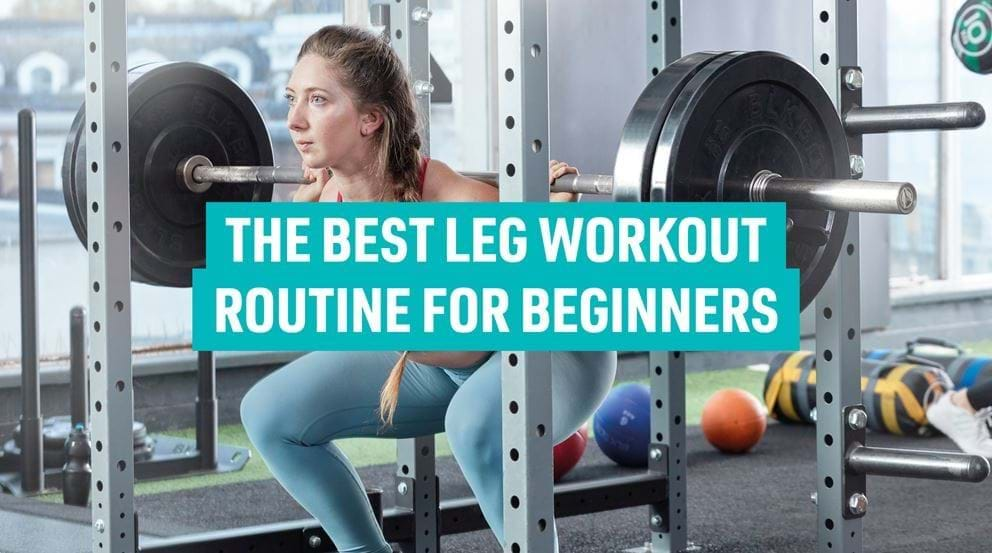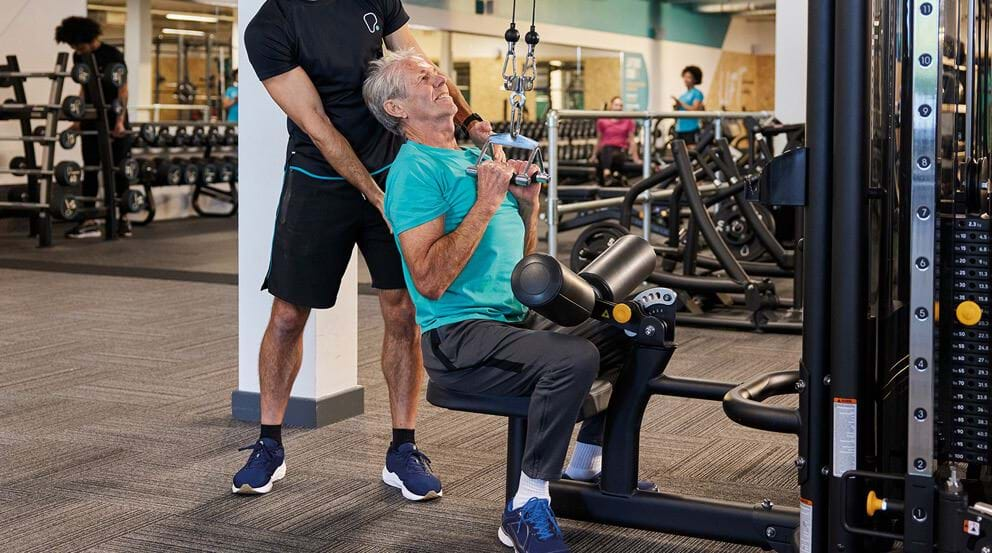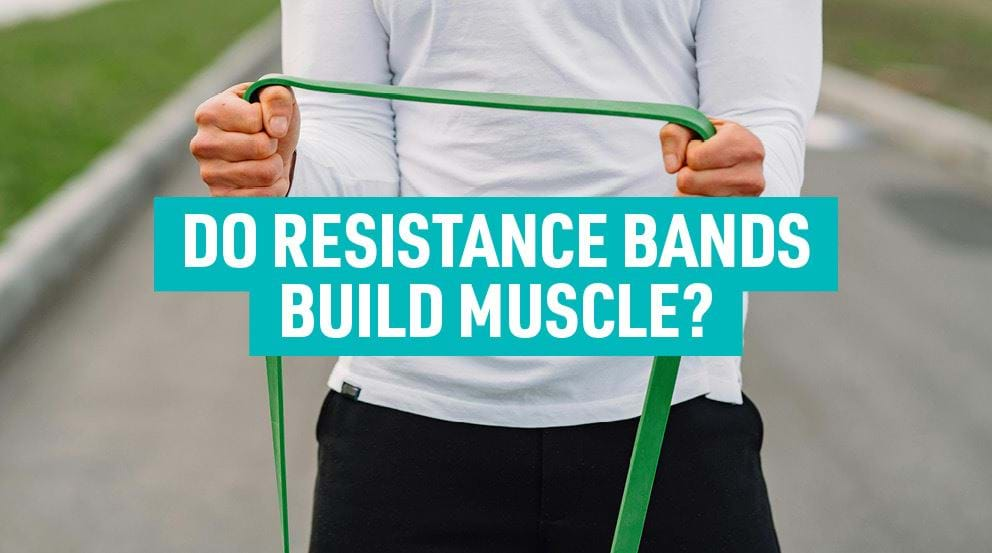The Best Leg Workout Routine For Beginners

Strength training has many mental and physical benefits, and we'd argue that everyone should strength training in some form (whether that's lifting weights, calisthenics, Pilates, or more) in their exercise routine.
Many beginners are put off strength training as, unlike cardio and cardio machines which are straightforward to use, it's difficult to know where or how to start. Social media platforms like Tiktok can be extremely helpful in learning new exercises, but some of the workouts and movements are very advanced and not suitable for beginners. Take the deadlift for example -- this is a great lower body exercise, but you need a good level of strength and technical ability to perform this move correctly. If you try and tackle a deadlift in your first gym session, you're unlikely to get the form right, so you may not be using the correct muscles and can risk injury.
We've asked Personal Trainer Suzy Quinn to share a leg day routine for beginners, so that you can begin to build up strength, mind body connection, and confidence in the gym.
Why should beginners train legs?
When strength training, it's important to train all major muscle groups to avoid creating muscular imbalances. Some reasons to specifically train legs are:
The legs make up the largest muscle group in the body
The legs are made up of several muscles, and together this makes up the largest muscle group in the body. Failing to train your legs means you are neglecting a huge part of your body, and one that is involved in almost all movements. Walking, sitting, standing, running, crouching, jumping, and more, all recruit the muscles in your legs.
It benefits daily movement
Strengthening your legs will mean that you can perform everyday activities more efficiently, and if you play any sports, you'll notice an improvement in athletic performance too. As the muscles in your legs get stronger, you'll find improved endurance for any movement that uses the legs, whether that's standing at a concert, hiking with friends, or dancing late into the night.
Creates the appearance of lean, toned legs
Building strength and muscle in the legs is key to creating toned, defined legs. While you may think leg day will lead to bigger, bulkier legs, it's actually very hard to visibly pack on muscle -- it takes years of training and correct nutrition to gain significant muscle mass. However, most people who strength train will see visual improvements in muscle tone well before this.
Improves bone and joint health
Strength training strengthens the muscles surrounding the joints which plays a key part in having strong, stable joints. It also strengthens the bones and joints themselves and can help to reduce joint pain. Our ankles, hips, and knees are constantly in use and under a lot of pressure. Training the legs can ensure they are strong and healthy to keep carrying us through as we age.
Combats sedentary lifestyle
A large number of jobs these days involve long periods of sitting down. This causes the muscles in the lower body to become tight and weak, which can lead to posture issues, injuries, and aches. Training your legs helps to counteract these issues and ensure your legs are fighting fit.
Burns more calories
As mentioned earlier, the legs make up the largest muscle group in the body. Training the legs requires the heart to do more work to deliver blood and oxygen to the muscles, which results in a more calories burnt.
Beginner leg day routine
There are plenty of leg exercises to choose from but finding ones which are effective and beginner-friendly can be a bit of a minefield. While a good leg day for beginners will look different to a leg day for someone who's been lifting for years, it should still include effective exercises for working the glutes, quads, hamstrings, and calves.
The following exercises can be combined into a beginner leg workout, and as it's bodyweight only they make great leg exercises at home for beginners too.
We recommend aiming for three sets of 8-12 reps for the following exercise. Once you can do 12 reps with good form, consider adding weight or progressing to a harder variation.
Bodyweight squats
Squats are a great exercise for all gym goers. They're a compound exercise (this means they engage multiple joints and work multiple muscles) and can easily be progressed to make harder as you gain strength. Starting with bodyweight squats is great for beginners as it allows you to focus on form and build strength and stamina.
Stand tall with your feet between hip and shoulder width apart (wherever feels most comfortable for you) and turn your feet slightly out. Engage your core muscles then sink your hips back while bending at the knees, stopping as your thighs reach parallel to the floor. You can hold your arms out in front for balance, or rest on your hips. Drive back up to standing by pushing through the ground.
Step ups
Step ups build unilateral (single leg) strength and work all the major muscles in the legs, including the glutes. They can be made easier or harder by adjusting the size of the step, or by adding weights.
Stand facing a step, box, or bench. Raise your right foot and plant it firmly on the step, then shift your weight into this leg and drive up through the foot until you are standing, and tap your left foot on the step. Step the left leg back down and return the right foot to the ground. Repeat on one leg for your desired reps before switching legs.
Lunges
Lunges are another great compound exercise that builds single leg strength and helps to improve core strength and stability. This exercise also helps to stretch and strengthen the hip flexors, which are often tight and weak from sedentary lifestyles.
Stand with feet hip width apart, hands on hips. Engage your core and then step your right foot around 2-3 feet forward, then bend the front leg and lower your body until the back knee is just above the ground. Push back up through the front foot and step the right foot back. Repeat on the same side until you have finished your reps then switch sides.
Lateral lunges
Lateral lunges work the muscles in a different direction to the more popular leg exercises and helps to builds strength in a sideways movement pattern. It also works the adductors and abductors, which are not recruited much in standard lunges and squats.
Stand with your feet hip width apart and engage your core. Step your right foot out to the side, and as your foot lands bend your knees and push your hips back. Stop as your thigh reaches parallel with the floor and push back up through the foot before returning to the starting position.
Calf raises
The calf muscles get worked in pretty much every leg exercise, but it's worth also doing calf raises to further strengthen these muscles.
Stand with your feet hip width apart, resting your hand on the wall or a high box for support. Keep a neutral spine and engage your core before pushing up onto the balls of your feet. Hold for a second before slowly lowering down. You can also do this on the edge of a step to work the calf further.
Gym leg day for beginners
The above exercises can be done both at the gym and at home, but if you have access to a gym, we also recommend taking advantage of the resistance machines available.
Gym machines are great for beginners as they have a fixed movement pattern which makes it difficult to perform wrong. This means you can build strength and confidence in movement patterns with a low risk of injury.
Some good leg machines to try are:
Leg extension machine for the quads
Leg curl machine for the hamstrings
Leg press machine which works all the lower body
As you get stronger and more confident in the gym, you can begin to bring in weights or try more advanced exercises to further challenge your muscles.
For more ideas (including this lower body and legs HIIT workout) check out our free Exercises section and get a breakdown of how to perform different exercises for different muscle groups.
If you’d like support on your fitness journey, sign up with a PureGym personal trainer who can help you meet your goals.


